The Maxtor XT-8380S is a behemoth of a drive, with this example hailing from late-1989. Maxtor released the XT-8000 series in either ESDI or SCSI formats, with the XT-8760 being the highest capacity member of the family.
After battling with it for way too long, this example is still going over 30 years later.

Drive Attributes ------------------------------------- Maxtor XT-8380S ------------------------------------- Capacity 360MB (formatted) Mfc Date 1989-08 (week 33) Format 5.25" (FH) Interface SCSI Platters 5 Heads 8 (data, +1 servo) Cache 45KB RPM 3600 Origin Singapore (MXT) -------------------------------------
Featuring 5 platters and 8 data heads, these drives utilise an additional dedicated servo head. This is the same on all members of the XT-8000 series, as per Maxtor’s official documentation.
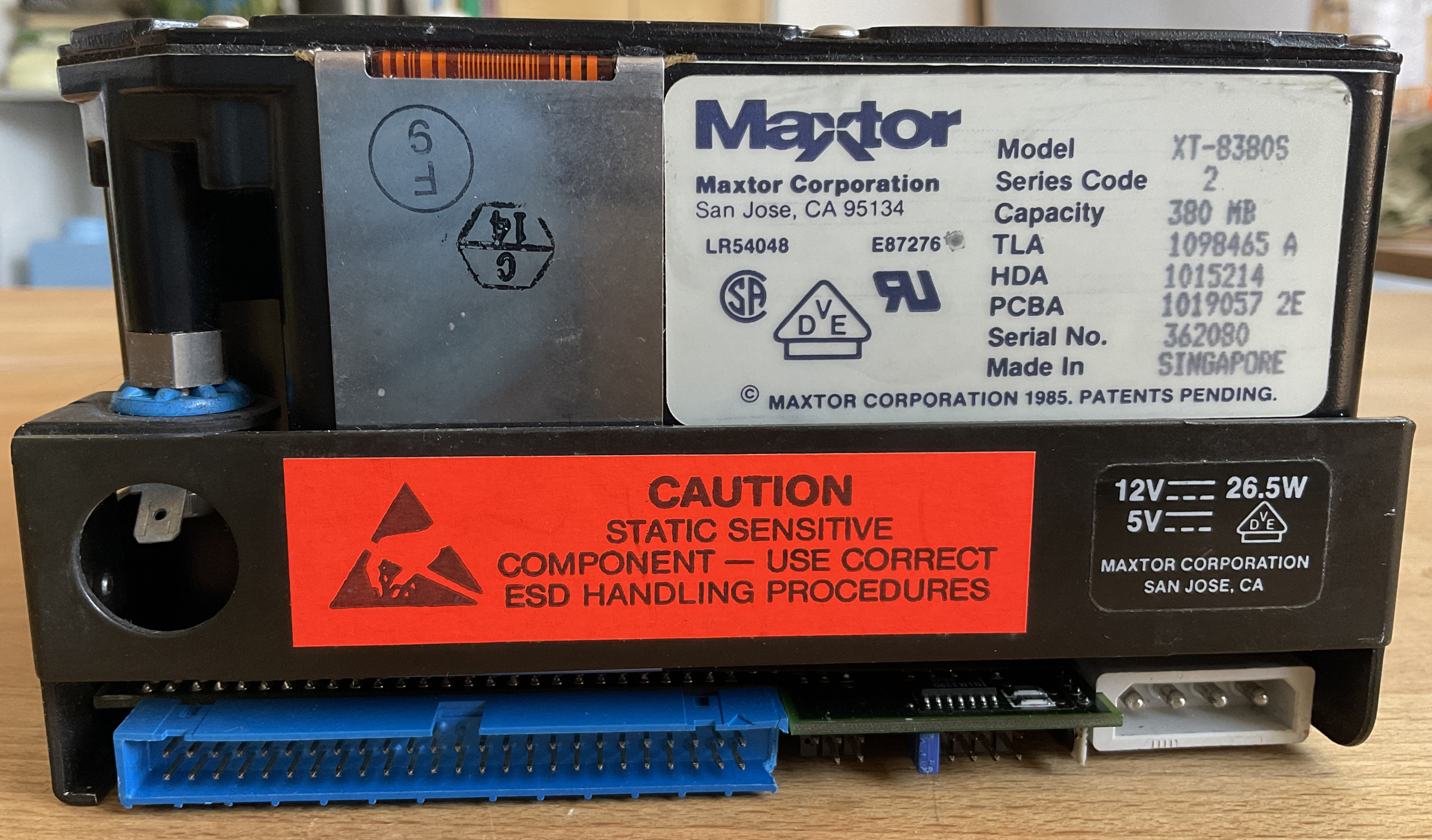
Maxtor’s label layout on the rear is fairly neat, with a bold ESD warning label to boot.
It’s clear this drive has had some past abuse, given the state of the SCSI connector housing.
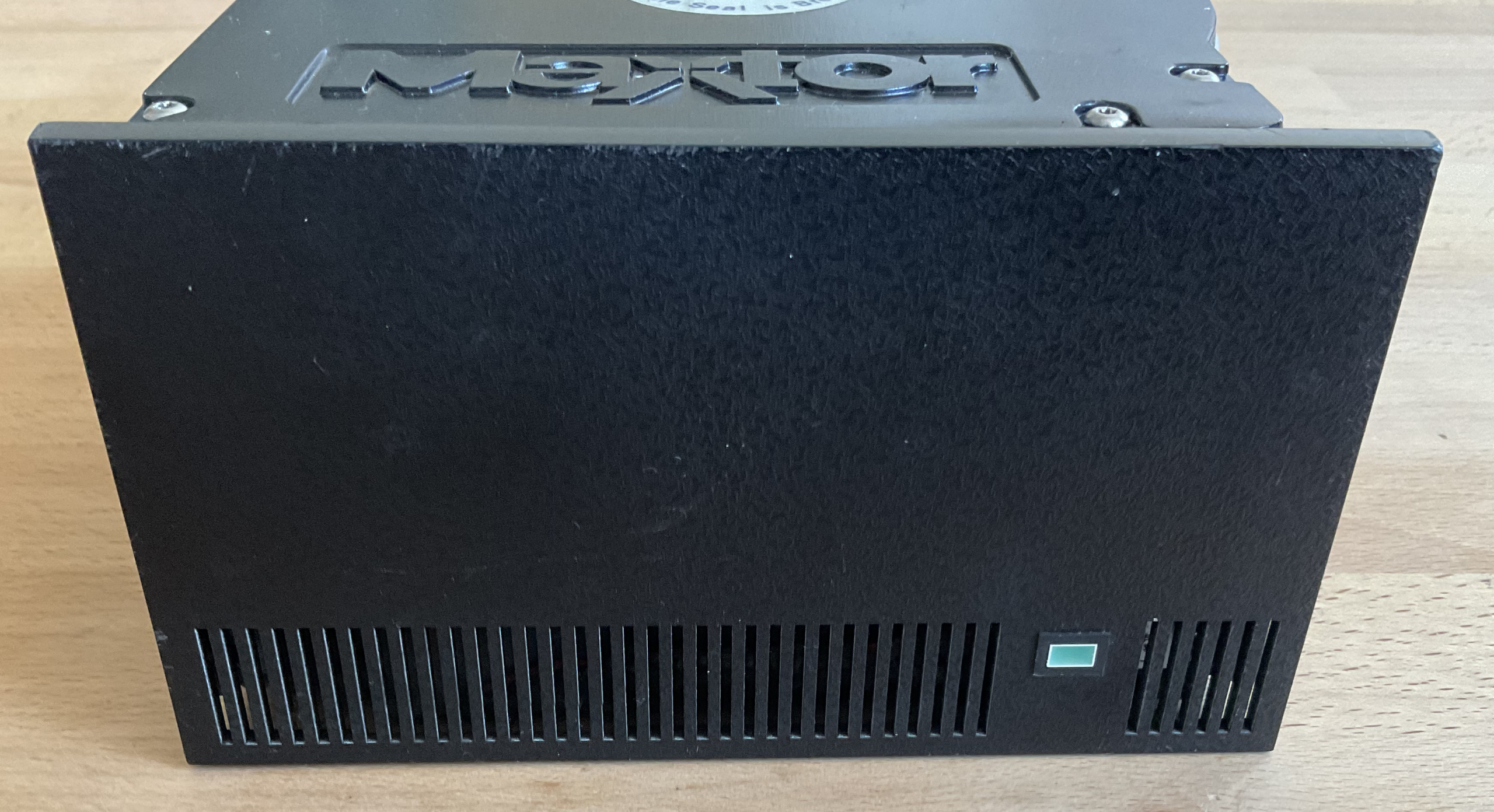

Some date stamps are visible on the rear of this unit, with this drive featuring a rather magnificent logic board.
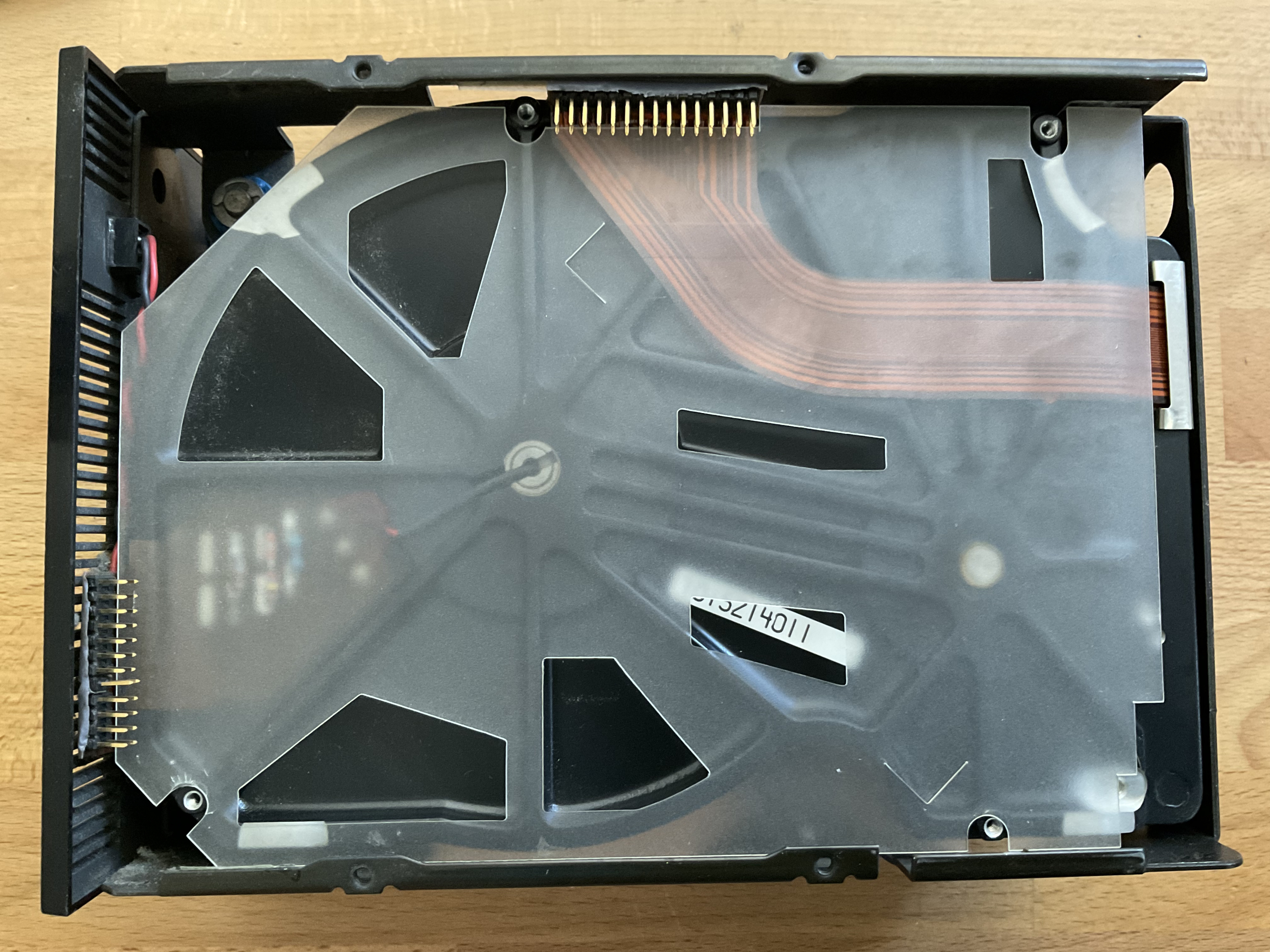

Beneath the PCB is a thin piece of insulation material, atop the base cast. This drive features Maxtor’s classic design feature of the actuator position being inversed compared to most manufacturers, a trend that would continue all the way until their dissolution in 2006. While this isn’t a decision exclusive to Maxtor, they were likely the most consistent example going into the 90’s.
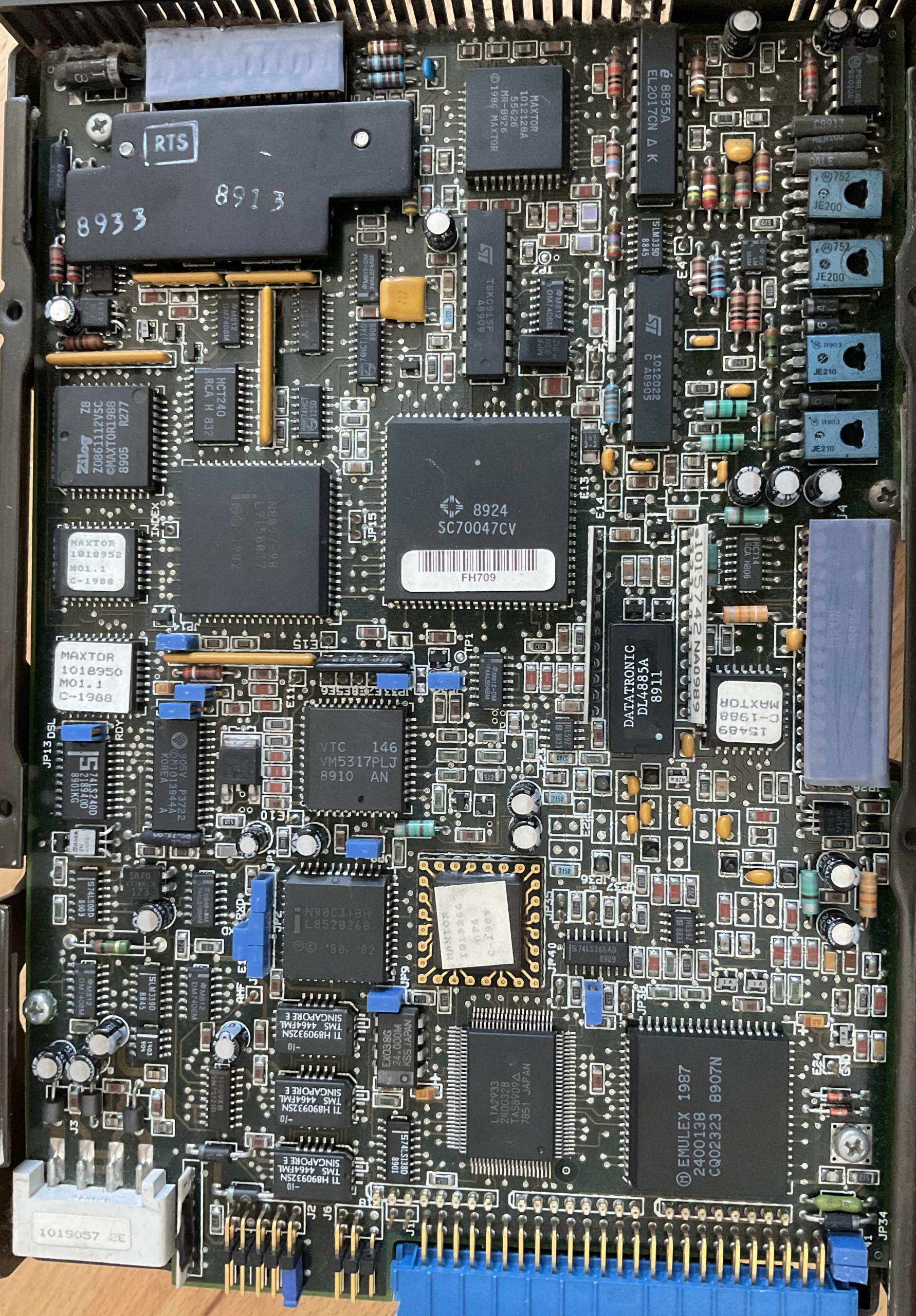
The microcontroller to the centre of the board (SC70047CV) is a part manufacturered by DTC (Data Technology Corporation), one of the many semiconductor design companies which no longer exist in the current day. The SCSI interface adapter/controller is provided by Emulex (2400138). Most other chips are off-the-shelf parts, excluding custom programmable parts from Maxtor.
There’s quite a variety of IC’s, alongside a myriad of brands being present. It’s a given that diagnosis on one of these boards, in the case of IC failure, may not be the simplest task compared to drives with less convoluted logic.
The date of manufacture for this drive was pulled via the secondary date stamp on the heatsink covering the spindle motor power section. While it’s hard to tell the exact reference for this date, it likely refers to PCB completion and/or verification, given that no IC’s are older than this date provided. With the exact date of manufacture being impossible to attain, this will do nicely in its stead.


There’s not much of note on the rear, but for those who need capacitor replacements and don’t wish to take the board off first, both are the same value at 2200µF, 16v.
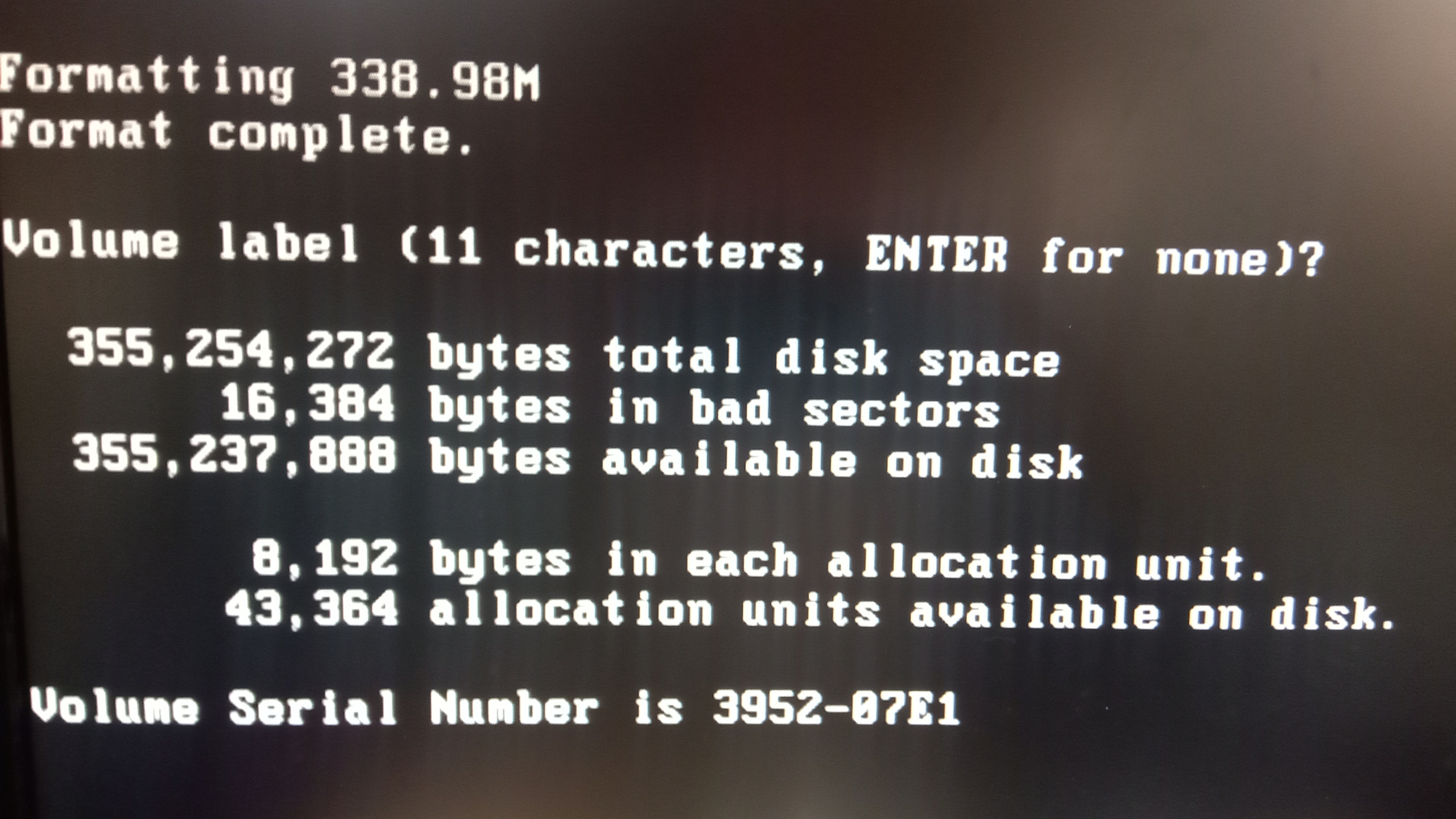

When initially receiving this drive, it had some major issues. For starters, it refused to even attempt spinning up, which was a clear indication of potential stiction. After a few short, but hard, knocks against a table, it freed itself up and attempted to spin-up. Unfortunately, the spindle motor had also suffered, from what was clearly at least a decade of non-use, so it required many restarts & attempts before it even managed to reach full-speed. Even then, the drive would initialise over and over again, making some horrendous thrashing noises as the motor struggled to retain its speed.
Coming back a few months later, after several hours of power cycles, the drive finally initialised and reliably sent a ready signal to its connected controller. As luck would provide, my trusty Adaptec controller from 1994 decided it wouldn’t like to coexist with this drive, passing an error message of “asynchronous device detected – unknown capacity”. After a few hours of troubleshooting, I simply suspected that the drive was dead.
It would all hang on the balance, until a new controller arrived: the Adaptec AHA-2940W. To say this controller was a lifesaver would be an understatement, since as soon as it was hooked up, it worked without a hitch. The drive reported only 16KB of bad sectors and has been running very reliably in all tests that can be thrown at it. An excellent result, for a drive that clearly had been unloved for many years!
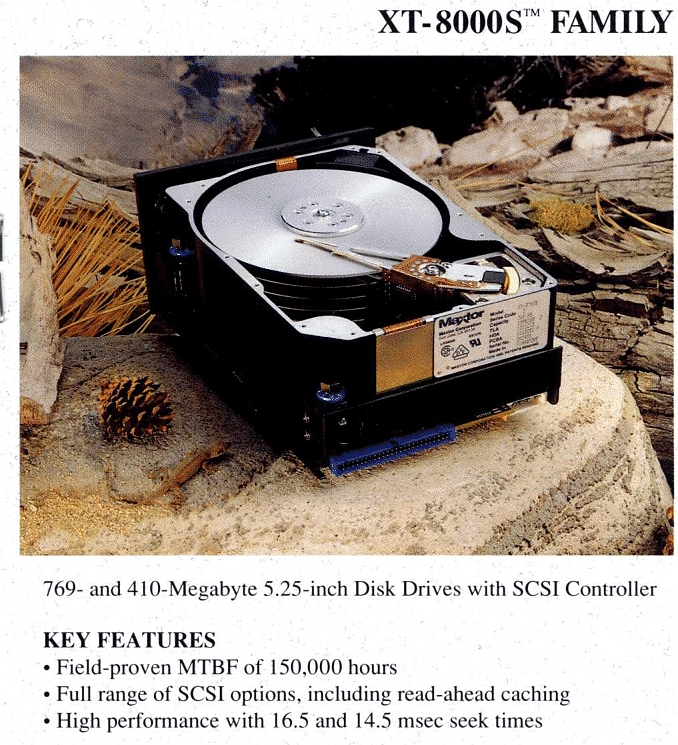
Through Maxtor’s (quite beautifully put together, found below) product line brochure, the inside of this series of drives can be freely seen. The image above demonstrates the internals of the full-capacity option (XT-8760), with the XT-8380 having fewer platters, as expected.
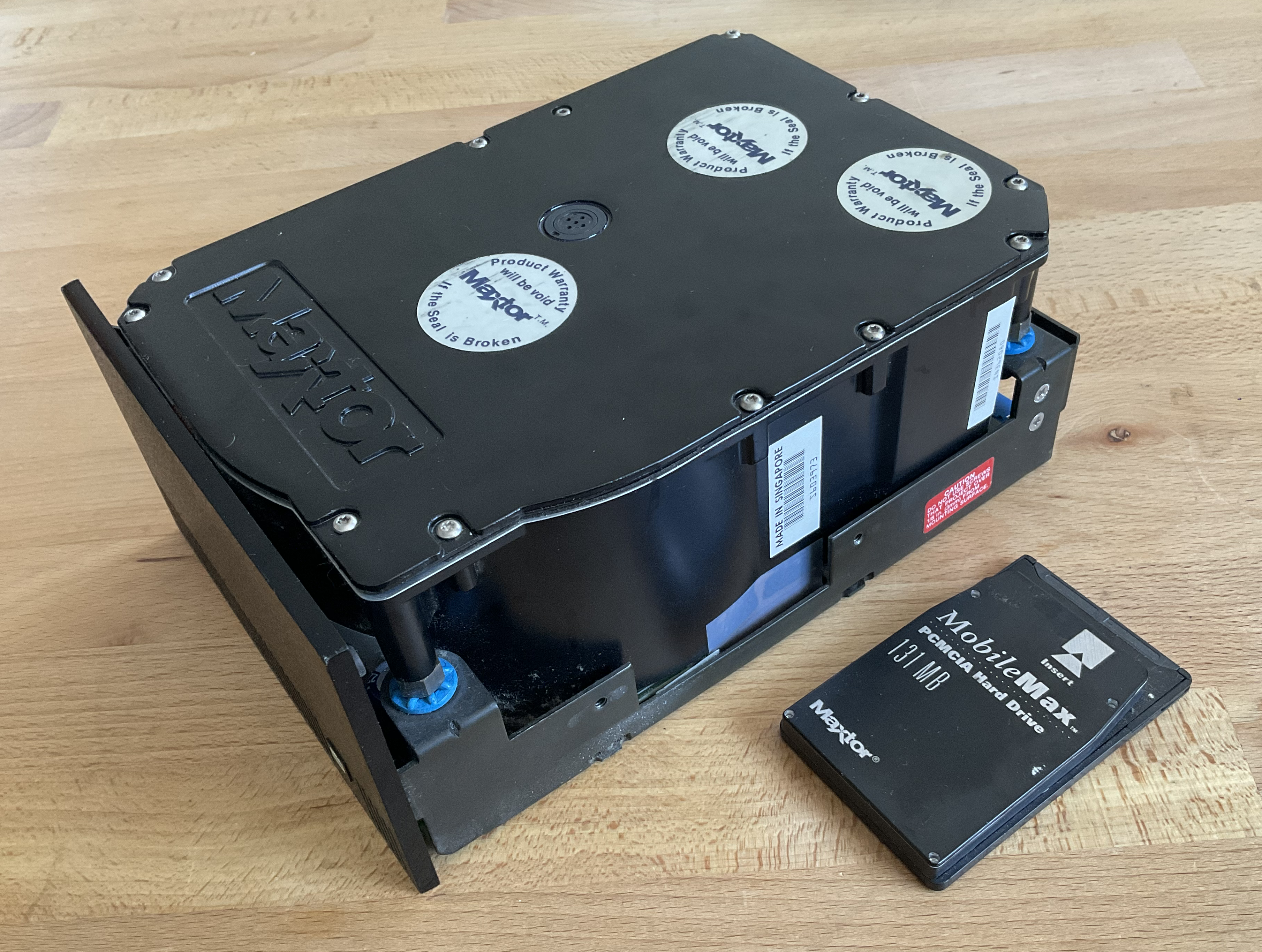
The XT-8380S is certainly a huge unit of a drive when compared to modern counterparts, but for its time it was an expensive & high capacity option in a market full of competition.
Only a year after Maxtor manufactured this particular unit, the company would acquire MiniScribe, changing their design methodology going into the 1990’s.
Maxtor Product Line Brochure (1991) (.pdf, opens in new tab)
Maxtor XT-8000S Family Brochure (.pdf, opens in new tab)
Maxtor XT-8000 Series Product Specifications and OEM Technical Manual (.pdf, opens in new tab)
If you missed the video I made on this drive, you can find it here: